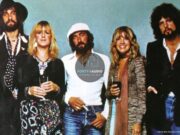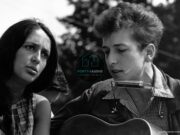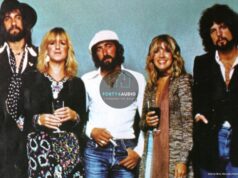Oasis, The Sound of a Generation
In the early 1990s, a band emerged from the grey skies of Manchester with a swagger that would soon shake the foundations of British music. Oasis wasn’t polished. They weren’t trying to be. But they had something undeniable: anthems that felt like they belonged to everyone, and a pair of brothers who couldn’t stop fighting – or writing some of the most iconic songs of their era. For a generation caught between the fading glow of the ’80s and the uncertainty of a new millennium, Oasis was a lifeline. And for many, they still are.
Manchester, 1991
To understand Oasis, you have to understand where they came from. Manchester in the early ’90s was a city in transition. The Madchester scene – led by bands like The Stone Roses and Happy Mondays – had begun to fade. The optimism of acid house was giving way to something grittier, more grounded. Enter Liam Gallagher, Paul Bonehead Arthurs, Paul Guigsy McGuigan, and Tony McCarroll. They formed a band called The Rain, which would soon become Oasis when Liam’s older brother Noel joined and took over songwriting duties.
Noel brought with him a backlog of songs and a vision. He wasn’t interested in being part of a scene. He wanted to be the biggest band in the world. And for a while, they were.
Influences That Shaped the Sound
Oasis wore their influences on their sleeves. The Beatles were the obvious touchstone – Noel once said he wanted to write songs that sounded like Lennon and McCartney but felt like they were written in a council flat. But there was more: the glam stomp of T. Rex, the punk snarl of The Jam, the psychedelic swirl of The Stone Roses. Even Burt Bacharach’s melodic sensibility found its way into Noel’s songwriting.
This blend of melody and attitude became the Oasis signature. Songs that felt both timeless and immediate, like they’d always existed but were somehow written just for you.
The Breakthrough
In 1994, Oasis released Definitely Maybe, a debut album that exploded onto the UK charts. It became the fastest-selling debut in British history at the time. Tracks like Live Forever, Supersonic, and Cigarettes & Alcohol weren’t just hits – they were declarations. This was music that believed in itself, even if no one else did.
A year later, they followed it with (What’s the Story) Morning Glory?, and everything changed. Wonderwall, Don’t Look Back in Anger, and Champagne Supernova became global anthems. The album sold over 22 million copies worldwide. Suddenly, Oasis wasn’t just a British phenomenon – they were international stars.
The Battle of Britpop
In 1995, Oasis found themselves in a media-manufactured rivalry with Blur. The Battle of Britpop saw both bands release singles on the same day – Blur’s Country House and Oasis’ Roll With It. Blur won the chart battle, but Oasis arguably won the war. Their album outsold Blur’s by a wide margin, and their cultural footprint only grew.
This rivalry wasn’t just about music. It was about class, identity, and the future of British culture. Oasis represented the working class, the underdog, the raw and unfiltered. And people connected with that.
Cultural Impact
Oasis didn’t just make music – they made moments. Their songs became the soundtrack to football matches, pub nights, and late-night singalongs. They embodied a kind of defiant optimism, a belief that no matter where you came from, you could still make something beautiful.
They were central to the Cool Britannia movement, a brief period in the mid-’90s when British culture was celebrated globally. Tony Blair even tried to align himself with the band – though Noel later admitted he regretted visiting 10 Downing Street.
Their fashion – parkas, Adidas trainers, shaggy haircuts – became iconic. Their interviews were legendary. And their live shows? Unforgettable.
Lesser-Known Stories
For all their fame, Oasis still has a few secrets. Live Forever was written as a direct response to Nirvana’s I Hate Myself and Want to Die. Noel wanted to write something that celebrated life, not wallowed in despair.
The original title for (What’s the Story) Morning Glory? was Where’s Noel?, a nod to the band’s chaotic recording sessions.
Bonehead and Guigsy left the band during the recording of Standing on the Shoulder of Giants, citing exhaustion and creative differences. Their departure marked the end of the original lineup.
And perhaps most famously, Oasis once turned down a $100 million offer to reunite. The wounds between Liam and Noel run deep.
A Discography That Still Resonates
Oasis released seven studio albums:
- Definitely Maybe (1994) – Raw, loud, and full of promise.
- (What’s the Story) Morning Glory? (1995) – Their masterpiece.
- Be Here Now (1997) – Bloated but brilliant in parts.
- Standing on the Shoulder of Giants (2000) – A darker, more experimental turn.
- Heathen Chemistry (2002) – A return to form with standout tracks like Stop Crying Your Heart Out.
- Don’t Believe the Truth (2005) – Critically acclaimed and creatively rejuvenated.
- Dig Out Your Soul (2008) – Psychedelic and heavy, a fitting swan song.
Their B-sides are legendary too. Acquiesce, The Masterplan, and Talk Tonight are fan favorites that could’ve been hits in their own right. The 1998 compilation The Masterplan is essential listening.
After the Split
In 2009, after a backstage fight in Paris, Noel quit the band. Oasis was over.
Liam formed Beady Eye, releasing two albums before disbanding in 2014. He then launched a solo career, with albums like As You Were and C’mon You Know earning critical and commercial success.
Noel formed Noel Gallagher’s High Flying Birds, blending classic rock with experimental flourishes. His solo work has been more eclectic, but no less ambitious.
Despite their separate paths, the shadow of Oasis looms large. Every interview, every tweet, every solo gig is haunted by the question: will they ever reunite?
Why Oasis Still Matters
Oasis captured something rare: the feeling that music could change your life. Their songs weren’t perfect, but they were real. They were loud, emotional, and unashamedly big.
They inspired a generation of bands – from Arctic Monkeys to Kasabian – and their influence is still felt today. Whether it’s a teenager discovering Wonderwall for the first time or a lifelong fan revisiting Definitely Maybe, the connection remains.
Their music has outlived the headlines, the fights, and the egos. And that’s the mark of something truly special.
Keep the Anthem Alive
At forty4 Audio, we believe music is more than sound – it’s memory, identity, and connection. If Oasis has ever meant something to you, you’re in the right place. Stick around. Explore more stories, rediscover forgotten albums, and connect with others who feel the same.
Because the songs don’t end when the record stops. They echo. And they’re waiting for you to press play again.










































